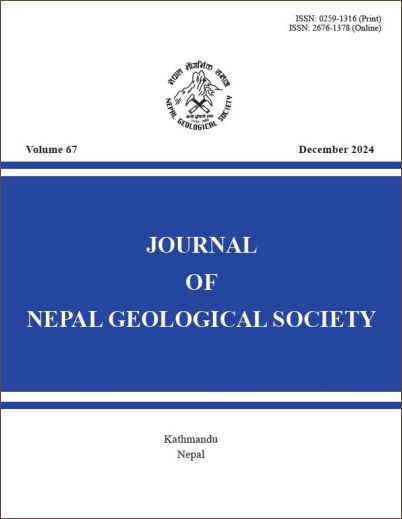Application of the differential GPS technique to monitor landslides: A case study of Dutti Landslide, Nepal
DOI:
https://doi.org/10.3126/jngs.v67i1.74592Keywords:
Dutti Landslide, DGPS, Landslide monitoring, Slip rate, Risk mitigationAbstract
Landslides are a major natural disaster in Nepal, particularly during the monsoon season. This study focuses on the Dutti Landslide in Kavrepalanchok District, Bagmati Province, which has been active for over 80 years, damaging farmland, displacing communities, and depositing sediment into rivers. The objective is to monitor the Dutti Landslide’s movement using DGPS technology to analyze its slip rate and direction while examining the correlation between rainfall patterns and landslide dynamics, specifically how seasonal precipitation affects the landslide’s behavior. Thirteen GPS monitoring stations were installed along the landslide’s crown and surrounding areas to record topographic movement from December 2021 to December 2022 using Differential GPS (DGPS) technology. Findings show a peak slip rate of 14.7 cm in August, correlating with high rainfall, suggesting that ground saturation plays a significant role in landslide acceleration. Additionally, agricultural practices, such as wet farming, contribute to the upward migration of the landslide crown. This study highlights the importance of DGPS in understanding landslide dynamics, revealing how seasonal rainfall and human activities intensify landslide movement. Results emphasize the need for ongoing monitoring and targeted risk mitigation strategies to address the challenges posed by landslide activity in this region.
Downloads
Downloads
Published
How to Cite
Issue
Section
License
© Nepal Geological Society




